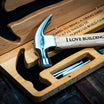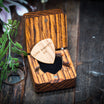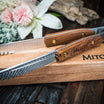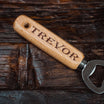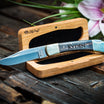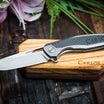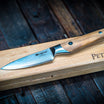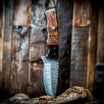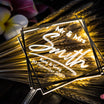





































Personalised Brass & Timber Compass – A Meaningful Gift for Life’s Big Moments
Select Your Choice:
See Your Order Come to Life
Watch your gift move from design to dispatch with live updates and real photos as it’s crafted and packed — so you always know where it’s up to.ⓘ
Personalise it for free
Let us know what to inscribe to make this compass a true keepsake.
Let us handle the wrapping!
Add Gift Wrap for
$9.50 per item, and we'll send you photos before it's wrapped—so you can see the magic before they do.
ⓘ
Pick your favorite wood grain wrapping:
Estimated Arrival Time
Orders take 3–7 business days to craft. In a rush? Choose Express Post at checkout and tell us – we’ll do our best. Peak times like Father’s Day and Christmas can take longer, so order early.
-
14 DecOrder Placed
-
17 Dec-19 DecOrder dispatches
-
21 Dec-04 JanDelivered !
When someone’s about to start something new — or finally wrap up something big — you don’t always know what to say. This compass helps.
It’s a solid, personal keepsake that speaks quietly but lasts a lifetime.
Made with your choice of solid timber, each compass is hand-assembled and sealed for life. The needle floats steady in oil, locked in place to handle heat, cold, pressure. We engrave your message on the timber face, the back, or both. Could be a name. A date. A simple line that says, "You’ve got this."
The timber’s the real deal too — not veneer, not glued-up bits. Each one is cut from solid seasoned hardwood, with natural markings, scent, and character that carry meaning of their own. Choose the one that suits the person:
- Cypress: rustic, scented, and warm — for reflection
- Sandalwood: rare and sweet — for celebration
- Burdekin Plum: dark, heavy, and water-resistant — for strength
- Camphor Laurel: fresh and earthy — for memory
- Ebony: rare and bold — for distinction
Each one is different. Just like the person it’s made for.
Whether it’s a graduation, a retirement, a birthday, or a farewell — this compass isn’t just a tool. It’s a thank you, a good luck, a you’re-ready-for-this.
What’s Included:
- Hand-assembled oil-filled compass (not digital, not mass-made)
- Precision laser engraving — your message, your words
- Gift-ready packaging
Compass Specs:
- Size: 70 x 70 x 36mm
- Case: Hardwood.
- Mechanism: magnetic needle on pivots in mineral oil - sealed plycarbonate
- Use: Ideal for land navigation (not for aircraft/boats)
Select Your Choice:
You may also like
🎄 Merry Christmas & Happy New Year🎄 We’re taking a short break to spend some time with family and recharge after a big season. We’ll be back on Monday 12th January, and will start processing all orders and replying to messages that came in over the break then. Thank you so much for your support this season – it genuinely means a lot to us. ❤️






